Everyday Mathematics Grade K Answer Key Unit 8 Section 8
Everyday Mathematics Grade K Home Link 8.2 Answers
Modeling Shapes and Structures
Family Note
Children can use toothpicks and miniature marshmallows, gumdrops, or small balls of modeling dough as building materials to help develop their understanding of 2- and 3-dimensional shapes. Encourage your child to use the materials to build structures (buildings, vehicles, 3-dimensional designs, and so on) that are made up of common geometric shapes. Help your child learn more about shapes and numbers by talking to him or her about this project. Ask questions such as:
- Are there any squares in your structure?
- How many triangles did you make? How many rectangles?
- Which shapes did you combine to make your creation?
- Do any of your shapes have more toothpicks than marshmallows?
- What 2-dimensional shapes did you make? What 3-dimensional shapes did you make?
Build shapes and structures with toothpicks and marshmallows. (You can use gumdrops or balls of modeling dough instead of marshmallows.)
Build models of 2-dimensional shapes such as triangles and rectangles. Also build models of 3-dimensional shapes such as cubes, pyramids, and prisms.
Tell someone at home about your shapes. Then bring one or two of your shapes to school.

Answer:
My creation is a 3 Dimensional shape. It is a combination of a square and a Rectangle.
Number of Triangles in my creation = 0 or Zero.
Number of Rectangles and Square in my creation are 1 or One each.
No, there is no shape having more toothpicks than marshmallows.
2-dimensional shapes I have made are Square and a Rectangle.
3-dimensional shapes I have made is my creation itself.
Explanation:
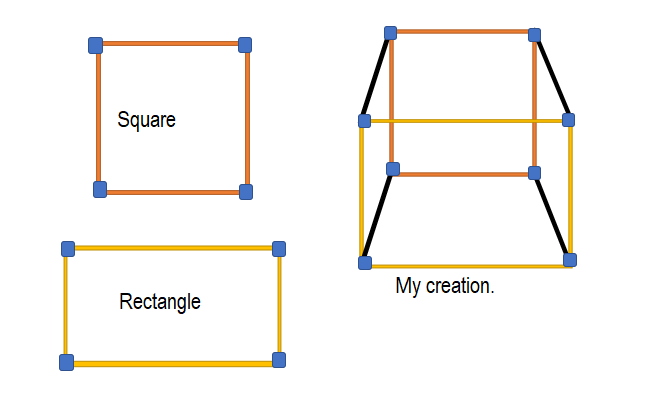
Everyday Mathematics Grade K Home Link 8.4 Answers
Counting High and Counting On
Family Note
In addition to counting actual objects, children enjoy the rhythm and pattern of reciting numbers in order. As children develop their oral counting skills, they also become aware of the patterns and structure of our number system. Encourage children to count as far as they can, and give subtle hints or prompts to help them count a little higher each time. Children enjoy seeing how high they can go, and they gain a real sense of power when they can start counting from any number.
Practice counting to 100.
Start counting at 1. Then start at another number such as 15, 27, 49, or 62.
Try these counting challenges!
- Count past 100. How far can you go?
- Count down to 0. You may wish to count along with a timer that counts backward.
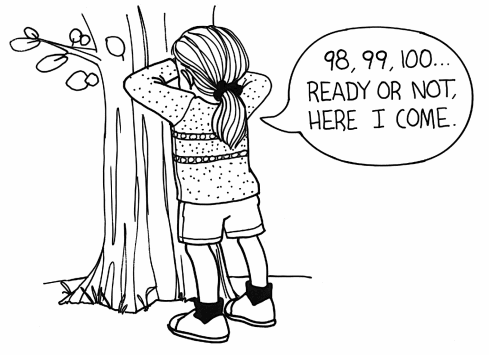
Answer:
Count past 100.
=> 0 , 1 , 2 , 3 , 4 , 5 , 6 , 7 , 8 , 9 , 10 , 11 , 12 , 13 , 14 , 15 , 16+ , 17 , 18 , 19 , 20 , 21 , 22 , 23 , 24 , 25 , 26 , 27 , 28 , 29 , 30 , 31 , 32 , 33 , 34 , 35 , 36 , 37 , 38 , 39 , 40, .. .. .. ..
Count down to 0.
=> 100, 99 , 98 , 97 , 96 , 95 , 94 , 93 , 92 , 91 , 90 , 89 , 88 , 87 , 86 , 85 , 84 , 83 , 82 , 81 , 80 , 79 , 78 , 77 , 76 , 75 ,…. .. ..
Explanation:
Count past 100. Counting numbers before 100.
=> 0 , 1 , 2 , 3 , 4 , 5 , 6 , 7 , 8 , 9 , 10 , 11 , 12 , 13 , 14 , 15 , 16+ , 17 , 18 , 19 , 20 , 21 , 22 , 23 , 24 , 25 , 26 , 27 , 28 , 29 , 30 , 31 , 32 , 33 , 34 , 35 , 36 , 37 , 38 , 39 , 40, .. .. .. ..
Count down to 0. Counting numbers backward from 100 to 0.
=> 100, 99 , 98 , 97 , 96 , 95 , 94 , 93 , 92 , 91 , 90 , 89 , 88 , 87 , 86 , 85 , 84 , 83 , 82 , 81 , 80 , 79 , 78 , 77 , 76 , 75 ,…. .. ..
Everyday Mathematics Grade K Home Link 8.6 Answers
Grouping Snacks by Tens and Ones
Family Note
Your child is building an understanding of place value by exploring the numbers 10–19. He or she is working to understand that these numbers are composed of ten 1s and some more 1s. (The number 10 has no extra 1s.) This work helps children understand the structure of our base-ten number system and prepares them for more advanced addition and subtraction.
Choose a snack with small pieces, such as cereal or raisins. Count out between 10 and 19 pieces.
Write how many pieces you have. ___
Make a pile of 10 pieces of the snack.
How many pieces are left over? __
Fill in the double ten frame and write a number sentence to show how many pieces you have.
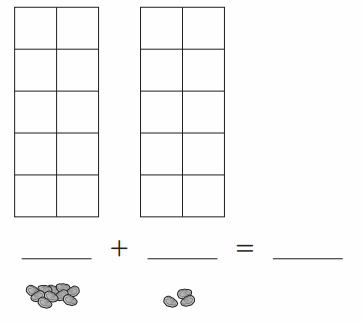
Try to count backward to zero as you eat your snack!
Answer:
My snack is Pizza.
Number of pieces in my Pizza = 16 or Sixteen.
Number of pieces left over = 6 or Six.

Counting numbers backyard:
16 , 15 , 14 , 13 , 12 , 11 , 10 , 9 , 8 , 7 , 6 , 5 , 4 , 3 , 2 , 1 ,0.
Explanation:
My snack is Pizza.
Number of pieces in my Pizza = 16 or Sixteen.


Number of pieces left over = 6 or Six.
Everyday Mathematics Grade K Home Link 8.9 Answers
Telling Number Stories
Family Note
We have been telling number stories in school and writing number sentences, or equations, to model each story. Help your child become a great problem solver by taking turns telling and solving number stories with him or her. Children especially enjoy number stories that relate to their lives.
Tell number stories about people in your family or places around your home. Start with some “5” stories (stories with 5 as the answer).
For example: Mom had 6 cans of tuna, but I ate one.
How many cans of tuna were left?
Then have someone in your family tell number stories for you to solve.
Write number sentences for some of your number stories.
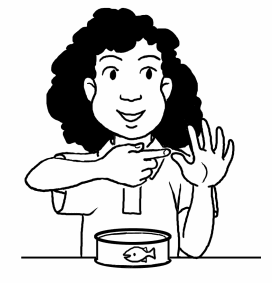
Answer:
Total number of Chocolates in the Fridge = 10 or Ten.
Number of Chocolate mom and dad took = 1 each => 1 × 2 = 2 or Two.
Number of Chocolate Younger brother and sister took = 1 each => 1 × 2 = 2 or Two.
Number of Chocolate I took = 1 or One.
Number of remaining Chocolate in the Fridge = Total number of Chocolates in the Fridge – (Number of Chocolate mom and dad took + Number of Chocolate Younger brother and sister took + Number of Chocolate I took)
= 10 – (2 + 2 + 1)
= 5 or Five.
Explanation:
In home, there are 10 or Ten chocolates in the Fridge. Mom and dad, Younger brother and sister , me took each 1 or One from it. How many chocolates are remaining in the Fridge?
Total number of Chocolates in the Fridge = 10 or Ten.
Number of Chocolate mom and dad took = 1 each => 1 × 2 = 2 or Two.
Number of Chocolate Younger brother and sister took = 1 each => 1 × 2 = 2 or Two.
Number of Chocolate I took = 1 or One.
Number of remaining Chocolate in the Fridge = Total number of Chocolates in the Fridge – (Number of Chocolate mom and dad took + Number of Chocolate Younger brother and sister took + Number of Chocolate I took)
= 10 – (2 + 2 + 1)
= 10 – ( 4 + 1)
= 10 – 5
= 5 or Five.
Everyday Mathematics Grade K Home Link 8.10 Answers
Comparing Ages
Family Note
At school we have been comparing and ordering numbers from smallest (least) to largest (greatest). Help your child compare and order the ages of the members of your family. Prompt your child to count up from each number to the next number to check their answers and to practice counting on from numbers other than one.
Draw a picture of your family. Write each person’s age.
Write the ages in order from youngest to oldest:

Answer:
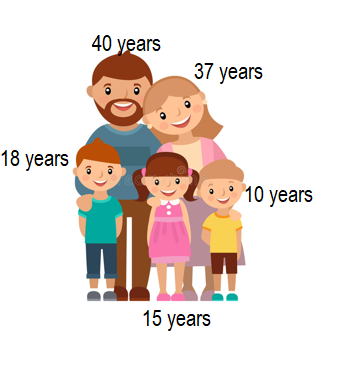
Ages from youngest to oldest are:
My little brother is the smallest of all – First – 10 years.
My little sister is the second smallest of all – Second – 15 years.
I am oldest than these two- Third – 18 years.
My mom is the smallest of my dad – Fourth – 37 years.
Finally, my dad is the oldest person among all- Last – 40 years.
Explanation:
My little brother age = 10 years.
My little sister age = 15 years.
My age = 18 years.
My Mom’s age = 37 years.
My Dad’s age = 40 years.
